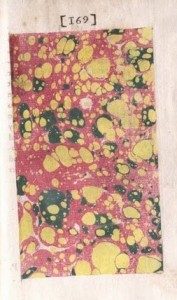This week saw the premiere at the London Film Festival of ‘Anonymous‘, a film directed by Roland Emmerich which explores the theory that the works attributed to William Shakespeare were actually written by Edward de Vere, Earl of Oxford. The 17th Earl of Oxford was proposed as an alternative author in the early twentieth century by J. Thomas Looney, and although academic consensus rejects the idea, Looney continues to inspire some lively conspiracy theories today: see http://shakespeareidentified.com/ and http://www.shakespearefellowship.org/, for example…
Whereas conspiracy theory websites are by their nature niche, a film soon to be on general release has the potential to reach a great many people. Might cinema-goers up and down the country be so taken in by actor Rhys Ifans’s portrayal of the Earl of Oxford that the authorship rumours will become universally accepted, and Shakespeare pulled down from his pedestal? The Shakespeare Birthplace Trust in Stratford-upon-Avon is concerned and defensive, so much so that this week it launched an original publicity stunt to coincide with the London Film Festival screening of the offending film. On the road signs near his place of birth that proudly proclaim Warwickshire as ‘Shakespeare’s County’, Shakespeare’s name has been temporarily crossed out (see picture here: http://www.bbc.co.uk/news/uk-england-coventry-warwickshire-15440882). With this very public protest the Trust draws attention to what it sees as an attempt to rewrite English culture and history, their censored road signs emblematising the idea that Shakespeare can’t simply be crossed out and replaced with another name.
